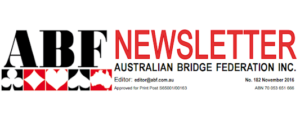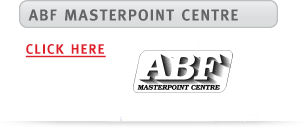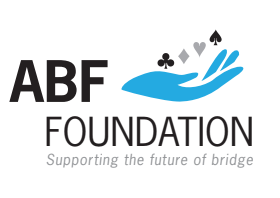Bridge Club Manager Extraordinare
The 1930s bridge world in Melbourne, as elsewhere, was very much the preserve of the middle and upper class. One of its major centres and often the centre was Lythgo’s Bridge Studio presided over by SN Lythgo (born Norman Stanley Lythgo but always referred to by his reversed initials). His was the largest teaching organization in Australia. He was one of the pioneer drivers of Culbertson and contract bridge, the principal organizer of major competitions and the director of choice for any important contest. It is somewhat ironic, therefore, that the icon of this rarefied bridge world was a former carpenter. Even more strangely, no record has yet been found of any bridge competition in which he played.
SN was born in Ballarat in 1892, the third of four children. We know nothing of his early childhood or schooling. His father died in 1900 and SN appears to have moved with his siblings to New Zealand to join his oldest brother who was married and living in Auckland. The rest of the family stayed on in New Zealand but SN, having acquired his carpentry trade returned, aged 20, in 1912, working in the building trade, first in NSW and then moving to Melbourne.
He was in Melbourne in August 1914 when war was declared. While in Auckland he had been a reserve member of the 2nd Auckland Regiment since he was seventeen – and he enlisted three days after the start of the war. Following training, in 1915 he was assigned to the Australia and New Zealand Army Corps and his first involvement in action was the Gallipoli landing. On the fourth day of the landing he was promoted in the field to Sergeant and he stayed five months on the peninsula.
SN was never wounded but like many of his compatriots was badly affected by disease – in particular dysentery (the ‘Gallipoli trots’) and scabies, with its maddening itching that made sleep impossible. After several brief hospitalisations in ships off the peninsula, it was finally agreed that he was no longer fit to fight. He was transferred to hospital in Cardiff in Wales where he spent six months. In addition to the loss of two stone in weight and being generally debilitated, he was considered to be suffering from high levels of combat stress and was frequently depressed and in low spirits. When he was finally invalided out in late 1918, he was regarded as having a permanent fifty per cent combat-related disability.
While the damage to his health was real enough, the war had another side. The carpenter, who went in as a private, came out the other end as an officer. Following his discharge from hospital, he was classified as fit for home but not overseas service and as ‘home’ included the UK, he was transferred to a gunnery school just outside of London, where he was promoted to lieutenant, and stayed until his discharge at the end of the war. In the process he found another role – as a teacher – which would be an important basis for his later career.
We know very little about his career in the 1920s but on return to Melbourne, there was no return to manual labour. In 1919, he gave his occupation as ‘sales’ but had received a serviceman’s loan of £150 to establish a manufacturing business. By 1924 he was described as a chemist, indicating that he was manufacturing in this line but we have no information on the name of the business, its scope or fate. The next piece of information about him comes in the form of a brief classified advertisement he lodged in the Melbourne Argus of 31 August 1929. The ad invited readers to learn bridge in their own home with three friends. They were to note that he used the latest method of teaching by examination and example. Success was guaranteed for moderate fees.
His appearance as a teacher of bridge is something of a mystery. There is no record of his participation in any of the various bridge competitions reported in the newspapers in the 1920s and we do not know if the move to bridge teaching was a positive and voluntary career move or a response to losing the day job. However, his address at around this time was described as being “rear” at 206 Carlisle Street, Balaklava – the rear indicating that as someone almost 40, he was probably not a man with substantial means at the time.
If the career shift was motivated by the financial possibilities from the bridge craze, he was not alone. The classified advertisements offered a range of options for the person wanting to learn bridge. However, a career as a bridge teacher or bridge club owner was in 1929 and any of the years that followed more commonly a road to bankruptcy than success and wealth. Many began but very few survived. The Depression played a part but the bigger problem was always the lack of a paying market. Many people were keen to learn bridge but most learned from their friends – often badly but for nothing. When it came to playing venues, existing clubs or charity groups formed their own clubs – usually no more than a weekly session but crowding out any potential bridge entrepreneurs.
In this environment, to survive even for a relatively short period, would show considerable business acumen but Lythgo not only built his business but survived in it until 1946, when he was the last commercial operator still standing. In October 1930 he began his first club – the Piccadilly Club at 358 Little Collins Street. This was followed in September 1931 by a move into the third floor of the new Howey Court nine-story “skyscraper” at 234 Collins Street, trading initially as the Howey Court Bridge Club and finally in January 1936 to an entire floor of the Presgrave Building at 275 Little Collins Street, trading as the “Lythgo Bridge Studio”. At its peak, he employed nine staff.
There were a number of reasons for his success and relative longevity. He was an excellent teacher and in the early thirties differed greatly from many other teachers in his realistic approach to the game. When others promoted the game as simple to learn, SN squarely addressed the fact that learning bridge properly required study and discipline. A series of his lessons which are known to us from having been published in regional newspapers still read well today. They show that he had the gift of clear explanation and took pupils systematically through the game, making no assumptions whatsoever about existing knowledge – starting from the classic statement of the basic requirements of bridge that “the game requires 4 wide-awake players, 2 packs of cards with different coloured backs, 4 scoring pads and pencils”.
He wrote that:
“More books have been written about Auction Bridge than any other card game. Its popularity is increasing every year and not to know the game is a handicap. As many people cannot understand Bridge books, they receive instruction from friends, and in most cases the information imparted is wrong or out of date. Although bridge is a difficult game, the weekly lesson in this column will be as simple as it is possible to make it. If you play the game, study them carefully and talk them over with your friends; if you desire to learn, arrange a party of four and master each lesson as it is given.”
He was a tireless innovator. He started to come to public attention in 1930 through a series of bridge broadcasts on 3UZ. Listeners were given the hand to be played in theArgus and advised to paste it into an exercise book so that they could make notes as Lythgo explained the play.
He was the first teacher in Melbourne and probably Australia to actively promote contract bridge and established himself as the main Australian link with Culbertson – a position he retained until the end. He was tireless in promoting bridge and different forms of competition. He donated a cup for a Victorian pairs championship – the SN Lythgo Cup and tried many competitive formats – separate women’s teams, men versus women and regional bridge. He provided the mailing address and facilities for the Victorian Bridge Association in its different incarnations until after the second world war. He had a major role in setting up the first interstate contest – the NSW versus Victoria match of 1933. The 1935 contest was played in his studio and he hosted the various international par contests of the thirties.
Some of the success was due to his sales skills and understanding of the market. At a time when most other clubs wanted payment of annual membership fees up front, his patrons only paid modest table money each time they came. He invested in advertising. His ads were always the first in the list of bridge clubs or tutors in the classified, always the largest and always the most appealingly written. He understood the importance of copyright and had the knack of getting value for his services. A local newspaper that carried his columns wrote in introduction that:
“We have arranged with a professional player to supply us with a series of 26 articles which will commence with the raw material and turn out the polished player at the end. These articles are being secured at some expense and we hope they will be appreciated.”
Above all, he established himself as a trusted neutral Director at tournaments no matter who was playing. The importance of this neutrality to his business model was illustrated by an unusual legal case in 1938. The “3AW Women’s Association” had decided that they wanted to play a tournament against a NSW organisation and asked Lythgo to train 20 of its members and select the best to play in the tournament. After the selection, word reached Lythgo that one of the unsuccessful aspirants had disputed his choice saying that it showed that he did not want them to win the match. The supposed author of the statement denied she had said anything to that effect but, Lythgo, nevertheless, launched a defamation action against her, seeking substantial damages of £249. The Judge asked the parties to try and settle the case out of court with the splendidly sexist statement that ‘sometimes women misunderstood things they heard’ and suggested that the matter could be solved if the person concerned could put it on the record that she had not accused Lythgo of dishonesty or favouritism. She was prepared to do this but Lythgo proceeded with his action regardless. The action inevitably failed as no witnesses could be found who would confirm that the statement had ever been made and the lady concerned reiterated that she had never considered that Lythgo had ever behaved dishonestly.
Lythgo had support from a high-powered bridge-playing legal team of R. Keon-Cohen and V. Braham and they would have almost certainly advised him that his action had little chance of success. Possibly though it was a case of no publicity is bad publicity. The case got media attention and, if nothing, else sent a loud and clear message about how serious he was about not playing favourites.
At the beginning of the 1930s, Lythgo’s was the place to be for a strong game but, in terms of playing strength, Lythgo’s by the mid-1930s had ceded first place to the Kallara Club in South Yarra from which Victor Champion’s teams dominated Victorian (and Australian) bridge – although he still counted on patronage from many of the State’s leading players including Dorothy McCance, Johnstone and Marjorie Thwaites and Charles Hickman. He also ceased to play a leading role as a bridge administrator. In the early 1930s he was heavily involved in an embryonic Victorian Bridge Association and was attempting to set up a national organization linked to the Culbertson international network for which he was the main Australian contact. This was overtaken by the broader development of the VBA and the Australian Bridge Council. Lythgo did not resist this and was highly supportive of the VBA, including hosting its administration, right until the time of his retirement from bridge.
The business though continued to be solid and he was able to purchase the 275 Collins Street studio, consisting of three rooms on an entire floor of the building of approximately 3500 square feet. The thirties seemed to be a good time for him also for non-bridge reasons. In 1933, aged 41, he married Doris Horssman Manning, also in her forties and also from Ballarat. This was his third attempt at marriage. The first in 1914 was extremely brief in terms of both courtship and duration. In 1926 he married a young woman he had met in England in 1918 and who came out to marry him some eight years later. This too was very short-lived but his final marriage continued until his death in 1960. There were no children.
Lythgo’s, like other bridge clubs, was badly affected by the advent of war in 1939. Quite apart from the absence of many players and the seeming impropriety of continuing games during this time, bridge clubs faced many practical difficulties. Petrol rationing made visitors reluctant to drive in to the city. Blackout restrictions made inner city alleyways and streets seem insecure. The clubs also struggled to maintain refreshment services in the face of restrictions on butter and similar necessities.
SN wrote more than once to the Argus complaining of unnecessary restrictions which hampered businesses such as his and of the lack of responsiveness of officials to complaints. The complaints about responsiveness likely related to a telegram he had sent to the Prime Minister complaining particularly about the fact that businesses, such as his, offering refreshments rather than full meals were unable to get butter rations – a telegram to which he had received no reply. However, unknown to him, the lack of reply was deliberate. In the telegram, almost certainly as rhetoric only, he had said that he would be unable to contribute to war bonds because he would have to use his savings to buy butter on the black market. This was certainly rhetoric – no one (at least no one with SN’s intelligence) seriously intending to buy on the black market would advertise this to the authorities in advance – but the authorities could also not be seen to ignore such a stated intention. The telegram had, therefore, been referred to the Director of Rationing in Victoria for investigation of black market activities with an instruction that there be no reply to the letter pending the investigation.
As would be expected, nothing came out of this and at the end of the war, among the bridge clubs, Lythgo’s was the last commercial one standing – but only just. In 1945 he resumed aggressive advertising – particularly focusing on auction bridge which seemed at the time to be making a comeback against contract. By early 1946 though, he decided that enough was enough. In February 1946 he informed the VBA that he would no longer be in a position to host the Association and in February 1946 he advertised the business and the floor of the building it occupied for sale.
Following the closure of the club, SN disappeared from the bridge scene almost as abruptly as he had appeared in 1930. By the time of his death in 1960, aged 68, he was largely unknown to the newer generation of bridge players. Ever the pragmatist, to earn a living, he had actually gone back to his previous trades of building and carpentry. Among the public works for which he successfully tendered, was the refurbishment of the merry-go-round in the Melbourne Zoo – perhaps appropriate for somebody who more than once and more than most had ridden the swings of fortune.
This article is based on information from defence and patent files and John Curtin papers in the National Archives, the Argus and Age newspapers, Victorian birth, deaths and marriages records, the Victorian Government Gazette, Commonwealth Electoral Rolls and Cathy Chua’s History of Australian Bridge











